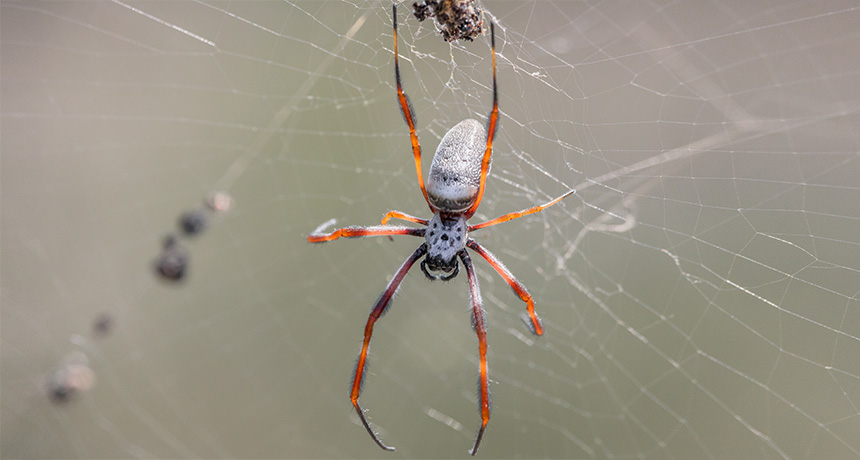How spiders mastered spin control

A strange property of spider silk helps explain how the arachnids avoid twirling wildly at the end of their ropes.
Researchers from China and England harvested silk from two species of golden orb weaver spiders, Nephila edulis and Nephila pilipes, and tested it with a torsion pendulum. The device has a hanging weight that rotates clockwise or counterclockwise, twisting whatever fiber it hangs from. When a typical fiber is twisted, the weight spins back and forth around an equilibrium point, eventually returning to its original orientation.
But unlike several fibers the scientists tested — copper wires, carbon fibers and even human hair — the spider silk deformed when twisted. That distortion changed the silk’s equilibrium point and cut down on the back-and-forth spinning, the scientists report in the July 3 Applied Physics Letters. Eventually, scientists might design spin-resistant ropes for mountain climbers, who, like spiders, should avoid doing the twist.